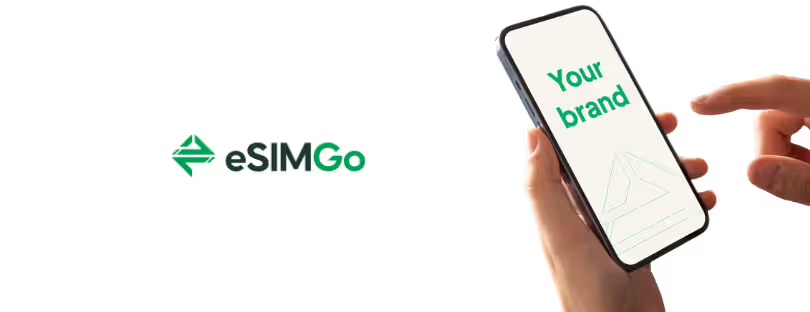
From eSIM to iSIM
The accelerated rise of eSIM technology in the past months sent shockwaves through the telecom industry, challenging the conventional use of SIM cards. what is iSIM
With the mainstream adoption of eSIMs, as predicted by Gartner and further fueled by the launch of the eSIM-only iPhone 14 models in September 2022, both consumers and businesses are feeling the effects.
And the eSIM market is expected to top $16 billion by 2027, according to Juniper Research (February 2023).
But eSIMs are just the beginning. The iSIM revolution to come.
What is iSIM?
The next revolution in the eSIM world is the iSIM (aka integrated SIM), a SIM that integrates directly into the device’s processor.
In essence, the iSIM enables devices to connect to a cellular network without needing a physical SIM card or soldered eSIM in a printed circuit board (PCB).
Instead of using a separate physical SIM card, the iSIM technology embeds the SIM features directly into the device’s hardware, allowing it to connect to the cellular network.
This feature opens up a range of benefits and opportunities for both manufacturers and carriers.
The iSIM offers two key features:
- It saves space by eliminating the need for a separate component, allowing for the secure connection of smaller devices.
- It requires significantly less power than eSIMs, making, for example, massive IoT use cases more operational.
Benefits of iSIM
The absence of a physical SIM card and tray enables manufacturers to create smaller and more compact devices.
This opens up opportunities for manufacturers to create smaller, more compact devices that are easier to carry and use. This will, in turn, reduce the risk of damage from dust or water. what is iSIM
eSIMs and iSIMs simplify manufacturing processes and logistics as they can link to any mobile network operator, regardless of product type.
Another benefit of iSIM technology, initiated by eSIM, is increased security.
Physical SIM cards can be removed, lost, or stolen, and with them, the ability to access a cellular network.
This drawback can lead to potential data breaches or unauthorized access to sensitive information. With iSIM technology, the SIM information is embedded directly into the device’s hardware, making it much more difficult for unauthorized access to occur.
iSIM (and eSIM) technology also provides over-the-air provisioning, making it easier for carriers to manage their customers’ devices. A customer must visit a carrier’s retail store with traditional physical SIM cards to activate or change their device’s SIM information.
With iSIM technology, this can be done remotely, saving the customer time and hassle and making it easier for the carrier to manage their devices.
Increased flexibility is another benefit of iSIM technology
With a traditional physical SIM card, a device can only connect to one carrier simultaneously.
With iSIM (and eSIM) technology, a single device can connect to multiple carriers, providing increased flexibility for the user. This feature is particularly useful for customers who frequently travel internationally, as they can switch carriers as needed without purchasing a new SIM card for each carrier.
In conclusion, by eliminating the need for a physical SIM card or an additional soldered eSIM component, iSIM technology reduces hardware costs, enhances security, enables over-the-air provisioning, increases flexibility, and opens up opportunities for smaller device designs.
As the demand for connected devices continues to grow, iSIM technology is poised to play an increasingly important role in the future of the cellular industry.
How does iSIM help manufacturers reach their goals?
Both consumer and IoT device manufacturers aim to create products that connect to cellular networks while considering the following design goals:
- Minimizing the cost, maximizing the materials’ efficiency, and conserving PCB space for flexibility and competitiveness.
- Reducing power consumption to extend battery life for battery-powered devices.
- Implementing robust security measures to secure the device, maintain end-user privacy, and safeguard cloud services.
- Streamlining testing processes and facilitating cellular feature activation.
The concept of an eSIM functionality running on a secure enclave integrated into a larger IC, also known as a System on Chip (SoC), has been developed to address these needs even better.
Are iSIM more secure than eSIMs?
iSIM in 2023: where do we stand?
Last year, Vodafone, Qualcomm Technologies, and Thales successfully demonstrated a smartphone that utilizes iSIM technology.
Now, we have the first-ever eSA certification of an iSIM defined by the GSMA (GSMA eUICC Security Assurance certification). This confirms that iSIM supports the same high standards of cyber-protection and flexible ‘anytime, anywhere’ connectivity offered by Remote SIM Provisioning (RSP).
The growth of IoT will come from the massive roll-out of low-power devices: OEMs will primarily benefit from lower material and power consumption bills.
The two most promising evolutions are reducing the subscription profiles in size and using consumer RSP technology instead of M2M.
Unlike IoT, consumer devices typically host a range of services that demand security and privacy to protect end users.
The iSIM for consumer devices is based on a framework that will support connectivity with an RSP-capable SIM functionality and other services like transportation, payment, and ID.
What’s next?
The iSIM will be first made available in high-end, innovative smartphones in the consumer electronics space. It will deliver its full promise when entry/mid-range smartphones and wearables are available.
Recent research foresees that by 2025, there could be 200 million iSIM-compliant consumer and IoT devices in the field.
iSIM for the IoT: challenge and perspective what is iSIM
As businesses worldwide embrace the IoT revolution, the adoption of iSIMs will become increasingly widespread.
These iSIMs will make it easier and more cost-effective for businesses to implement private 5G networks, which will be crucial in supporting the connectivity demands of massive Machine-Type Communications.
However, businesses must also be aware of the potential challenges posed by iSIMs.
For IoT device makers, product development timelines will likely be shorter with the SIM integrated directly into the device.
To understand integration, we must first examine System-on-Chip (SOC).
Complex devices, typical in manufacturing, energy, health, or military sectors, contain multiple functions, such as audio processing, graphics processing units, WIFI, and cellular modems.
When these devices are manufactured, it is more cost-effective and efficient to design a single chip that integrates all the functions rather than several discrete chips.
The next step in integration is to include the secure area in the SOC, which will host the SIM operating system.
This reduces the overall cost, minimizes power consumption, and reduces the footprint on the device’s PCB.
These benefits are particularly important for many IoT devices, requiring small, efficient, cost-effective solutions.
There are two reasons why enterprises and IoT device manufacturers will benefit from this integration.
- It simplifies the bill of materials by eliminating the need for a separate component,
- It reduces power consumption and motherboard space.
Overall, the development of eSIMs and iSIMs, along with the growth of private networks, will drive the rapid expansion of the IoT industry in the coming years. what is iSIM
From machine-to-machine communications to Industry 4.0, the future of IoT is bright, thanks to the next-gen SIMs.









